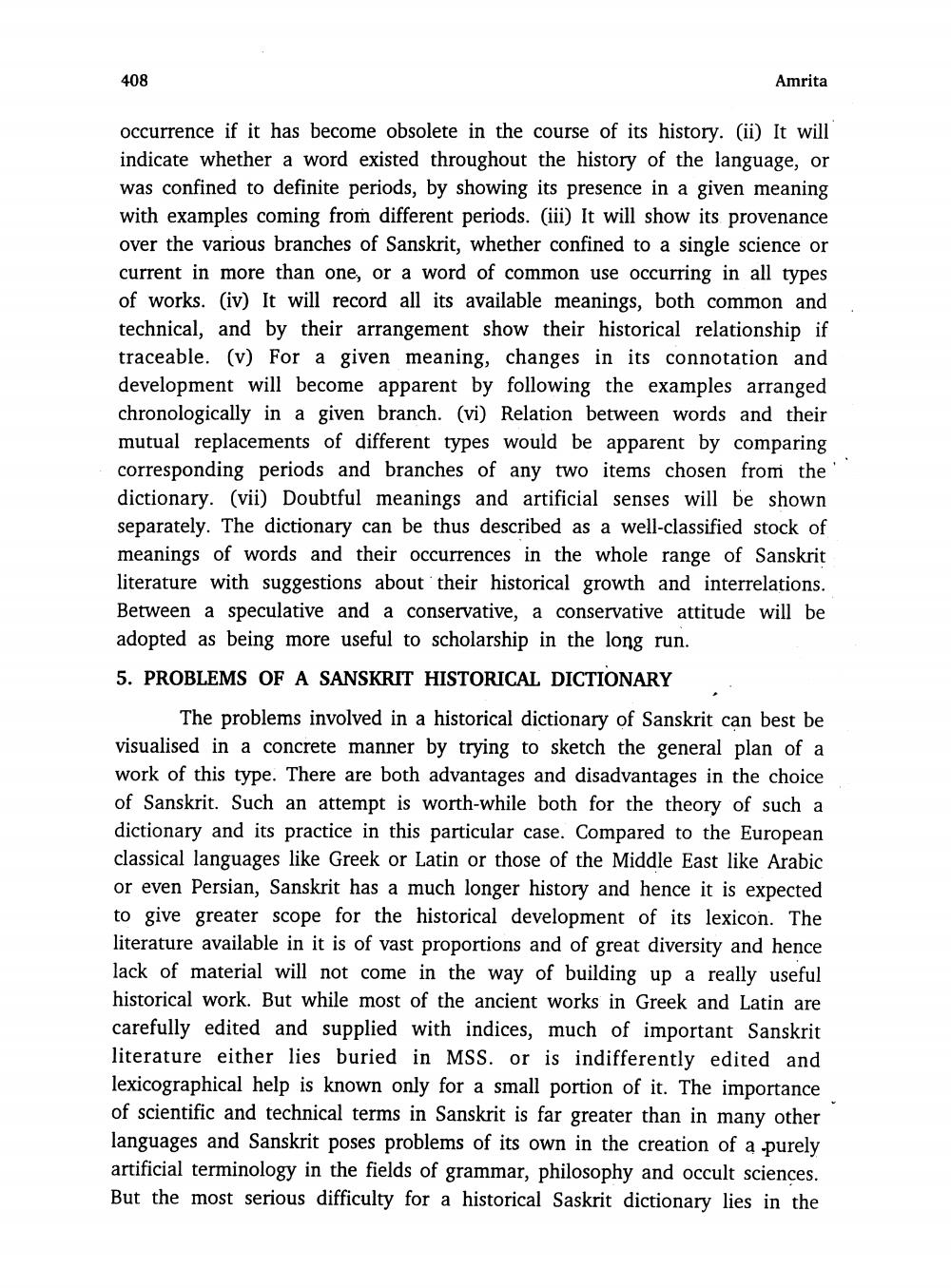________________
408
Amrita
occurrence if it has become obsolete in the course of its history. (ii) It will indicate whether a word existed throughout the history of the language, or was confined to definite periods, by showing its presence in a given meaning with examples coming from different periods. (iii) It will show its provenance over the various branches of Sanskrit, whether confined to a single science or current in more than one, or a word of common use occurring in all types of works. (iv) It will record all its available meanings, both common and technical, and by their arrangement show their historical relationship if traceable. (v) For a given meaning, changes in its connotation and development will become apparent by following the examples arranged chronologically in a given branch. (vi) Relation between words and their mutual replacements of different types would be apparent by comparing corresponding periods and branches of any two items chosen from the dictionary. (vii) Doubtful meanings and artificial senses will be shown separately. The dictionary can be thus described as a well-classified stock of meanings of words and their occurrences in the whole range of Sanskrit literature with suggestions about their historical growth and interrelations. Between a speculative and a conservative, a conservative attitude will be adopted as being more useful to scholarship in the long run. 5. PROBLEMS OF A SANSKRIT HISTORICAL DICTIONARY
The problems involved in a historical dictionary of Sanskrit can best be visualised in a concrete manner by trying to sketch the general plan of a work of this type. There are both advantages and disadvantages in the choice of Sanskrit. Such an attempt is worth-while both for the theory of such a dictionary and its practice in this particular case. Compared to the European classical languages like Greek or Latin or those of the Middle East like Arabic or even Persian, Sanskrit has a much longer history and hence it is expected to give greater scope for the historical development of its lexicon. The literature available in it is of vast proportions and of great diversity and hence lack of material will not come in the way of building up a really useful historical work. But while most of the ancient works in Greek and Latin are carefully edited and supplied with indices, much of important Sanskrit literature either lies buried in MSS. or is indifferently edited and lexicographical help is known only for a small portion of it. The importance of scientific and technical terms in Sanskrit is far greater than in many other languages and Sanskrit poses problems of its own in the creation of a purely artificial terminology in the fields of grammar, philosophy and occult sciences. But the most serious difficulty for a historical Saskrit dictionary lies in the




